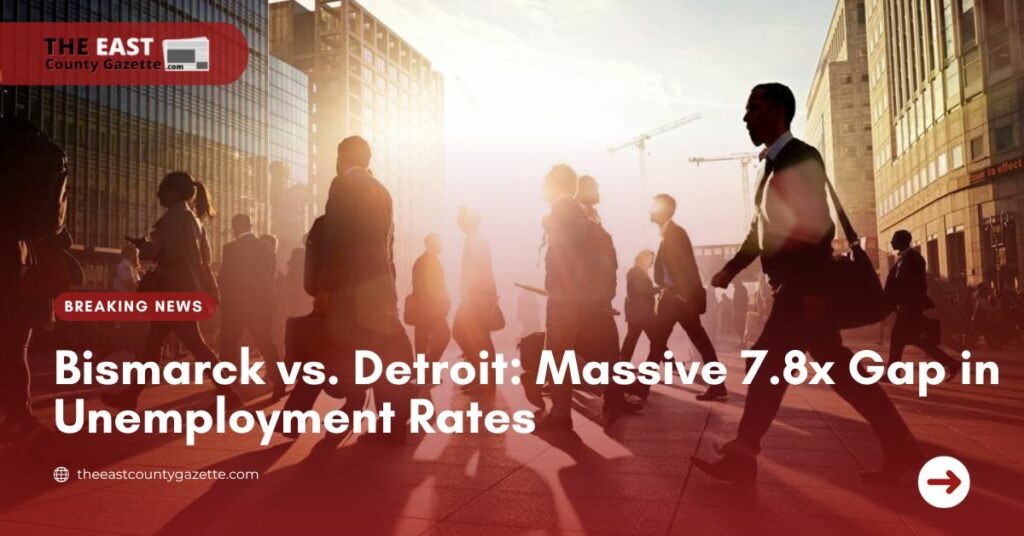The differences in employment rates between cities often provide an interesting picture. The unemployment rates in Detroit, Michigan, and Bismarck, North Dakota, differ significantly.
Detroit has one of the highest unemployment rates in the country, whereas Bismarck has the lowest. The unemployment rate difference between the two cities is a staggering 7.8 times.
The difference highlights the various economic environments that exist across the United States and provides a glimpse at the variety of factors affecting local employment markets.
Bismarck vs. Detroit: Job Rate Difference
Bismarck, North Dakota’s capital, emerges as a beacon of low unemployment. Bismarck’s 2.2% unemployment rate is a tribute to the city’s economic stability, as it is much lower than the national average.
The region’s ability to sustain a low unemployment rate is linked to a variety of factors that contribute to its economic resilience.
Detroit, on the other hand, has one of the highest jobless rates in the country. Detroit’s job market has major issues, with a rate 7.8 times that of Bismarck.
The economic landscape of the city displays a complex combination of historical, industrial, and socioeconomic elements that have shaped its employment surroundings.
Bismarck’s Employment Secret
Bismarck’s low unemployment rate is due to its diverse economic portfolio. The city has an active employment sector that is supported by industries such as healthcare, education, and government services.
Furthermore, the presence of large enterprises and institutions, such as an effective university system, helps to ensure job stability.
The city’s strategic location within the Great Plains region, combined with a comparatively lesser population influx, has produced an atmosphere in which job searchers can find possibilities within a balanced labor market.
Here’s some news that’ll grab your attention for sure:
- Lake County and Statewide Unemployment increased in November
- Despite High-Profile Layoffs, Most People Are Likely To Retain Employment If A Recession Occurs
- GOP Overrides COVID-19 and Unemployment Measures
Detroit’s Employment Issues: Changes in Auto Jobs
On the other hand, Detroit is dealing with the fallout from economic shifts that have damaged the automobile industry, which was once the city’s lifeline.
The reduction in manufacturing jobs and the issues facing the auto industry have had a substantial influence on Detroit’s job market.
Factors such as population reduction, infrastructural constraints, and the need for diversification beyond conventional industries all contribute to the city’s effort to tackle high unemployment.
Conclusion
The story of the jobless rates in Bismarck and Detroit shows how complicated the factors that affect local job markets are.
It talks about how flexible economic strategies, a variety of businesses, and a forward-looking mindset can change job prospects in cities.
Understanding and learning from these differences can help policymakers in the United States make specific plans to help different communities grow their economies and stay stable.

